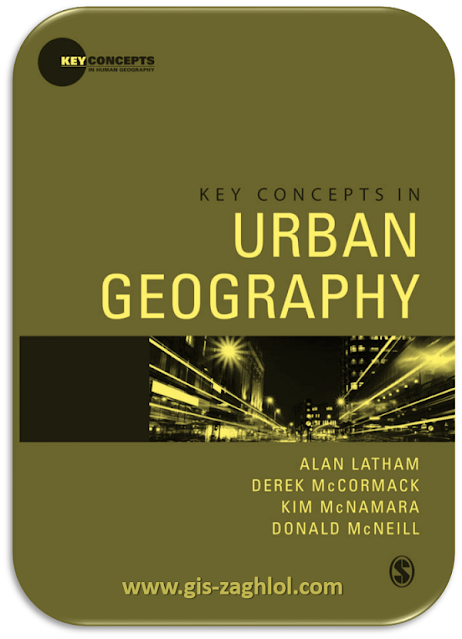كتاب المفاهيم الاساسية في الجغرافيا الحضرية Key concepts in urban geography
كتاب المفاهيم الاساسية في الجغرافيا الحضرية Key concepts in urban geography ، استكمالا لسلسلة تحميل كتب جغرافيا pdf نقدم لكم في هذه المقالة كتاب المفاهيم الاساسية في الجغرافيا الحضرية Key concepts in urban geography ، من تأليف Alan Latham, Derek McCormack, Kim McNamara, Donald McNeill.
Introduction book Key concepts in urban geography
This e-book is an encyclopedia for Key concepts in urban geography, as it contains 40 main topics, these topics are divided into many sub-topics, all in 240 pages, and these some topics are covered in the book Key concepts in urban geography:-
Location and Movement
As we have seen, the rise of spatial science in the 1950s and 1960s was emboldened by the potential that a raft of new statistical and theoretical tools seemed to present. Quantitative geographers became fascinated with urban structure. Not only were cities increasingly coming to define humanity’s collective future, they were also a ready-made research laboratory. They presented a series of intriguing intellectual puzzles. Why were some cities so large, and why did they appear to be getting more so? Why were some industries concentrated in some places and not others? How did transportation networks work? Why were land rents in some parts of cities so high and others so low? What determined the flow of people and information between different cities? In a short period of time and borrowing with enthusiasm from other disciplines that shared an interest in the spatial distribution of human activity such as economics and sociology, quantitative urban geographers developed an impressive range of theories through which cities might be understood. And, at the same time, cities offered a wealth of existing and potential data sets – population censuses, railroad freight bills, electoral rolls, newspaper circulation figures, highway flow rates, to name just a few examples – with which geographers could get to work developing empirically rigorous theoretical models to answer all of these questions.
Constructions
The second set of concepts allows us to get some purchase on cities as built, or constructed environments. We begin by considering the relationship between cities and nature, and how the urban environment is not necessarily unnatural, but is better understood as a kind of hybrid of the natural and social. The discussion cuts across a range of themes that have been exciting theorists, such as urban political ecology and animals in cities. The relationship between human actors and nature has been an important new field of study in human geography and the relationship between urbanity and (controlled) nature is one that is only recently being given fuller examination.
Envisioning and Experience
major critique of quantitative urban geography was that its understanding of human action was too narrow and unnecessarily constrictive. These geographers were accused of having overlooked the social and political dimensions of the urban forms that they studied, or even excluded an interest in human experience. By seeing human actors as driven by neo-classical presupposition of strict economic rationality and, further, by suggesting that the only dimensions of human action that could be studied scientifically were those that could be rigorously measured, quantitative urban geography was blind to what it is that makes humans human. Emotion, memory, our ability to form meaningful attachments with each other, our capacity for wonder, all had no place in quantitative urban geography. A key issue, however, was an unwillingness to accept that how they envisioned the urban was a very loaded decision. The diagrams used in these urban geographies are important to consider, as they both imply a scientific form of ‘mastering’ urban space, as well as reducing human behaviour to a series of lines drawn on maps.

0 تعليقات
شكرا لتعليقك .. سيتم الرد عليكم في اقرب وقت ممكن .
كوكب المنى